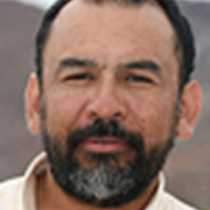San Esteban & San Pedro Martir Islands
A very bright sun, quiet wind and a calm sea were the scenario today where we woke up navigating in the Midriff area aboard the National Geographic Sea Lion. We were heading towards San Esteban, an isolated and remote island that once held a population of the most wild and authentic branch of the Seri Indians in the Gulf of California. Called by them Coftecool Comcaac (or “Seri Island of the Giant Lizards”) it is reputedly famous because is the home for the largest chuckwalla species in North America.
We arrived to the island and observed the yellow-footed gulls in the stage of selecting nesting sites and even laying eggs (as their breeding season has started) on the shore, just above the line of the highest tide. For that reason, as the naturalists and guests walked on the pebbled beach, we avoided any disturbance to the gulls. After passing the beach, we split up in different hiking groups over a wide and long, beautiful arroyo with a lot of vegetation. Some of us searched for the almost mythical chuckwallas, of which we found at least four live individuals perfectly camouflaged in the bush, under rocks or into crevices. The great lizards were very tame and confident, allowing us to take hundreds of photos. Our guests from Olivia were highly enthusiastic and happy because, for many of them, this was the first time they saw and touched a chuckwalla!
Another party walked to reach some pits dug to roast desert agaves, very abundant on the island, in an effort to produce liquor know in Mexico as mescal, a century ago. On the way back to the beach, almost all our guests and naturalists observed several spiny-tailed iguanas, another endemic species that inhabits the island, posing like statues proud of themselves. In one spot, two iguanas were seen together (see photo).
The island “gifted” us, before departure for our afternoon destination, letting us find and photograph another endemic species, the black-tailed rattlesnake, dressed with a beautiful vivid green coat of scales and, of course, a black tail with a big rattle!
In the afternoon, we reached another remote and beautiful island, San Pedro Martir, for Zodiac cruises. We anchored the ship in a safe location and began the great adventure with the many nesting birds of the island. In fact, thousands of brown and blue-footed boobies, brown pelicans and, especially, red-billed tropicbirds (see photo), were flying back and forth over the whole piece of land, perching in the very abundant high cliffs, or traveling in coordinated courtship flights. The noise, produced by the different species and tons of individuals, was spectacular and filled all the air. The experience was intensified by the smell of the live birds and the guano accumulated for years.
Many California sea lions were also present sunbathing on the rocky or sandy beaches of the island. To finish this incredible and long day, as we left San Pedro Martir, a group of sperm whales swam and dove in the surrounding waters. Our ship approached them slowly and quietly because there were several calves among the huge mothers and juveniles. The calves played, breaching and splashing, and made us remember that we were just visitors to their fabulous home called the Gulf of California.




